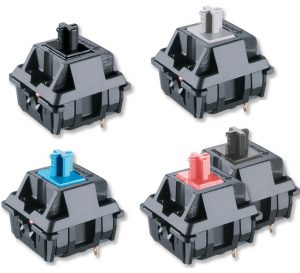The Role of a Membrane Switch in Modern Touch Interfaces and Controls
The Role of a Membrane Switch in Modern Touch Interfaces and Controls
Blog Article
Understanding the Capability of Membrane Layer Switches for Individual Interface Gadget
The functionality of membrane layer switches stands for a considerable improvement in customer interface style, incorporating efficiency with aesthetic versatility. As sectors increasingly focus on individual experience, recognizing the subtleties of membrane layer button technology becomes necessary.
What Are Membrane Switches?
Membrane layer switches are ingenious interface tools that help with customer interaction with digital equipment. These flexible elements include multiple layers, including a graphic overlay, spacer, and a published circuit layer. The style permits a smooth integration into various electronic devices, improving both the aesthetic and useful elements of user interfaces.
Membrane switches are frequently used in a large range of applications, from family devices to commercial equipment and clinical gadgets. Their building and construction typically features a thin account, making them an excellent selection for portable styles. The responsive comments given by these buttons can be crafted to meet particular individual preferences, making certain reliable interaction in between the customer and the gadget.
Durability is an additional substantial benefit of membrane buttons, as they are immune to dirt, wetness, and chemicals, which improves their lifespan popular settings. Furthermore, these buttons can be personalized in regards to shape, dimension, and graphic layout, permitting branding and user-specific features. Overall, membrane layer changes stand for a useful option for improving user experience in electronic tools, combining capability with aesthetic allure in an efficient fashion.
Exactly How Membrane Layer Switches Over Work
Operating on an uncomplicated concept, membrane changes utilize a layered construction to sign up user input effectively. Each button consists of multiple layers, consisting of a published circuit layer, a spacer layer, and a top visuals layer, which are designed to collaborate perfectly. When a user presses the top layer, it compresses the spacer layer, bringing the conductive components of the circuit layer into call with each other.
This call develops a closed circuit, signifying the gadget to implement a certain feature. The layout allows for various arrangements, including tactile feedback, which can boost the individual experience by providing a physical feeling upon activation. The products used in membrane switches typically include flexible substrates, such as polyester or polycarbonate, which make certain sturdiness and strength against wear and tear.

Trick Advantages of Membrane Layer Buttons

Another substantial advantage is their compactness. Membrane layer switches click resources are thin and lightweight, which makes it possible for manufacturers to save space in their tools without giving up performance. This function is specifically beneficial in applications where weight and volume are crucial considerations.
In addition, membrane layer switches are resistant to dust, moisture, and chemicals, improving their longevity. This strength expands their life-span and minimizes the need for constant replacements, leading to price savings gradually.
Additionally, the tactile responses offered by membrane switches can be enhanced to boost customer interaction. They can include functions such as elevated switches or distinct clicks, improving usability and customer experience.
Applications Throughout Industries
Interface devices utilizing membrane layer switches prevail in a vast array of industries, showcasing their adaptability and capability. Membrane Switch. In the medical market, membrane switches are essential to gadgets such as analysis equipment and person monitoring systems, where their sturdiness and simplicity of cleaning are essential for keeping hygiene criteria. Similarly, in the automotive market, these switches content are utilized in control panel controls and infomercial systems, giving a sleek and modern-day interface for customers.
Moreover, the customer electronics industry take advantage of membrane layer switches in appliances and portable gadgets, where portable style and user-friendly interfaces improve customer experience. Industrial applications also utilize membrane changes for control board in equipment and automation systems, emphasizing their effectiveness and resistance to harsh settings.
In the aerospace and protection sectors, membrane buttons are utilized in cockpit controls and tools, where reliability and performance under extreme problems are extremely important. Furthermore, the video gaming market progressively includes membrane layer switches in controllers and game makers, adding to an interesting user experience. Generally, the versatility of membrane changes enables their widespread usage throughout numerous fields, emphasizing their significance in contemporary interface style.
Future Patterns in Membrane Switch Over Modern Technology

Furthermore, the usage of advanced products, such as polycarbonate and polyester films, is expected to climb, providing enhanced toughness and resistance to ecological stress factors. These materials add to the total longevity of membrane buttons, making them appropriate for harsher commercial applications.
Moreover, the unification of clever technology, consisting of IoT connectivity, will certainly allow membrane buttons to interact with other tools and systems, promoting a much more interactive customer experience. This fad lines up with the growing need for wise tools across different markets, from medical care to customer electronics.
Last but not least, customization alternatives are expected to increase, permitting suppliers to create bespoke services tailored to certain individual requirements and preferences. These growths will place membrane layer buttons as necessary elements in the development of customer interface modern technology.
Verdict
In verdict, membrane layer changes represent a critical innovation in customer interface technology, using a dependable and functional solution for varied electronic applications. As innovations in product scientific research and touch sensing technologies continue, the performance and applicability of membrane switches are anticipated to increase, reinforcing their relevance in modern-day electronic tools.
Report this page